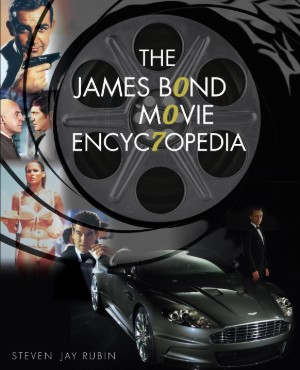(February 5, 1921–March 10, 2016; birth name: Klaus Adam) Colorful, innovative British production designer who, and starting with Dr. No in 1962, gave the interior sequences he designed a vibrant, exciting style and look that would become the hallmark of the James Bond series for nearly three decades. Adam, a native of Berlin who arrived in England when he was thirteen, came came to the 007 series on the recommendation of producer Albert “Cubby” Broccoli, who had worked with him on The Trials of Oscar Wilde (1960). Broccoli knew that Adam was innovative and could work within the minuscule production-design budget available on Dr. No. Given that budget, Adam’s design output was nothing short of extraordinary. Dr. No‘s marvelous reactor room, his eerie Crab Key interrogation chamber, and the underground observation living room were unforgettable. His more realistic settings—M’s office, the MI6 communications center, Bond’s London apartment, the casino, and Miss Taro’s cottage—also belied their actual cost. Adam’s designs, along with Terence Young‘s understated direction, Peter Hunt‘s slam-bang editing, and the Monty Norman/John Barry music, contributed heavily to the success of Dr. No and the emergence of the James Bond films as a pop cultural touchstone of the 1960s.
Adam’s location art director on Dr. No, Syd Cain, took over production-design chores on the next Bond film, From Russia with Love, while Adam toiled for Stanley Kubrick on Dr. Strangelove. Adam returned to the Bond fold on Goldfinger, once again stretching the limits of contemporary production design with his Fort Knox sets—not just the glittering interior but also the enormous exterior built on the Pinewood Studios lot – and the sprawling Auric Stud ranch, with its intricate and electronically enhanced planning room interior, (known as the Auric Stud rumpus room).
Working with special effects supervisor John Stears, Adam also contributed heavily to the design of Bond’s customized Aston Martin sports car. Weapon and gadget design, always a vital part of the Bond movie experience, was part of Adam’s responsibility, especially on the next film, Thunderball, which featured huge working elements such as the Disco Volante hydrofoil and a number of underwater devices employed by the villain, Emilio Largo (Adolfo Celi). Adam’s SPECTRE briefing room, with its modern stainless-steel look, was another design triumph of the period, as was his immense MI6 conference room, complete with animated wall charts and a drawing-room feel.
The international box-office success of the early Bond movies meant that the films’ budgets began to increase dramatically. With extra money in the bank, Adam began to take on tasks that only the ancient pharaohs would have contemplated. On You Only Live Twice he created the famous volcano set, an enormous and elaborate SPECTRE rocket base supposedly hidden inside an extinct Japanese volcano but actually built full size on the Pinewood Studios lot in 1966. On Diamonds Are Forever, Adam designed the garish Las Vegas penthouse of Ernst Stavro Blofeld (Charles Gray), the interior of the moon buggy testing facility, and the oil-rig advance base in Baja California, Mexico, which was actually a portable rig placed off the southern California coast near Oceanside.
With Syd Cain handling production-design chores on Live and Let Die and Peter Murton (another former associate of Adam) taking on The Man with the Golden Gun, Adam took a five-year 007 hiatus, returning on the mammoth The Spy Who Loved Me in 1976. This time, working with a design concept built around the circular and ellipse patterns he discovered on a location trip to the Costa Smeralda in Sardinia, Italy, Adam created the marvelous marine laboratory sets inside the amphibian Atlantis complex of villain Karl Stromberg (Curt Jurgens). But his blockbuster on Spy was the “Jonah Set“: the incredible interior of the Liparus supertanker, which was built inside its own specially constructed soundstage—the 007 stage – which became the largest soundstage and studio tank in the world. The glimmering, shimmering interior, with five-eighths scale nuclear attack submarines, an armored control room, catwalks, a monorail, and assembly and weapons rooms, became one of the most celebrated motion picture interiors of all time..
Following The Spy Who Loved Me, Adam came aboard for one more 007 adventure — Moonraker. This time, his designs were strongly influenced by three elements: the triangular architecture of the ancient Mayan civilization; the unusual look of the Cathedral of Brasília, designed by Oscar Niemeyer, which Adam discovered during a location “recce” to Brazil in 1978; and the work of the painter Mondrian. All of these elements would come together inside the fascinating rocket base of Hugo Drax (Michael Lonsdale), which included the “the Great Chamber,” an enormous jungle atrium constructed under a Mayan pyramid; the triangular control room and its Perspex floor and colorful viewing panels; and the boxlike space shuttle launching pad. Adam also designed the tubular structure of Drax’s radar-proof space station, a multilevel maze of engineering and scientific bric-a-brac that becomes a battleground in the film’s closing moments.

